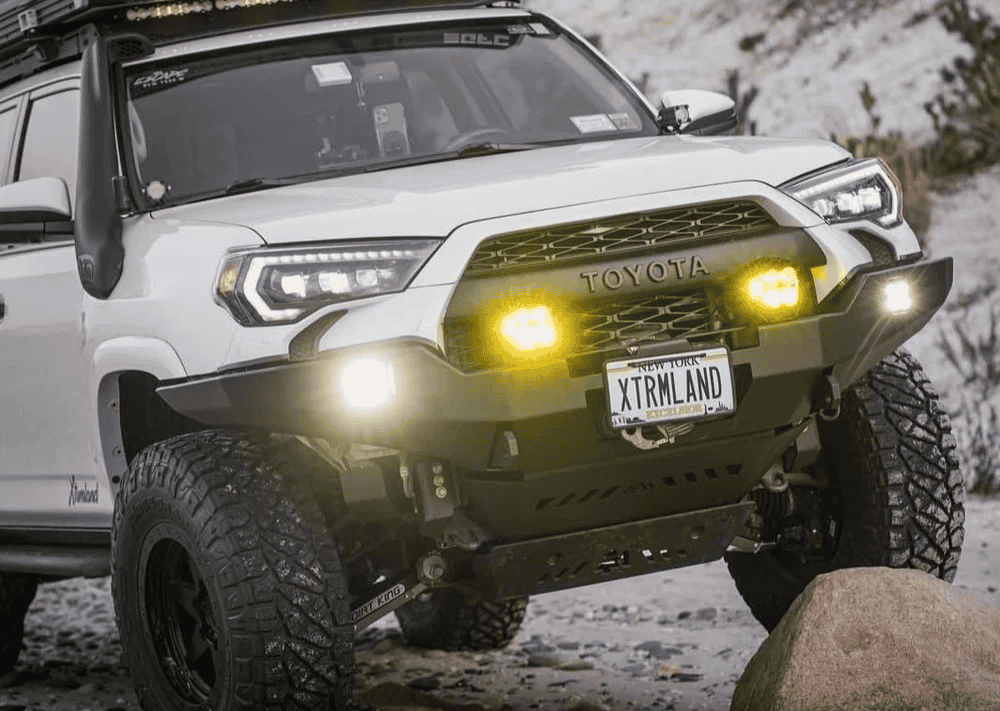Overland Vehicles

A camper topper is an enclosed shell that mounts to the factory bed rails of a pickup, transforming the cargo box into a weather protected space. The shell can be fiberglass, aluminum, or composite, and often includes side windows, lift up hatch doors, or solid panels. Many owners add a roof rack for gear, a solar array, or a rooftop tent, turning the topper into the foundation of a simple truck based camping setup.
Key considerations start with payload and weight distribution. Even a lightweight topper adds mass up high, which influences handling and braking. Roof loads such as tents or kayaks compound that. Checking gross vehicle weight rating and rear axle limits keeps the setup safe. Sealing is another priority. Automotive bulb seals at the tailgate, positive pressure vents, and tidy cable pass throughs help block dust and rain. For sleeping inside the bed, a raised platform with drawers creates flat space while preserving storage underneath.
Interior amenities can be minimalist or fairly involved. Common upgrades include LED cargo lighting, 12 volt outlets, insulated panels to reduce condensation, and screened windows for cross flow. Security matters too. Double latch doors, keyed compress latches, and privacy film protect valuables when the truck is parked. For daily driving, quick access to tools through side openings saves time and keeps heavy items low and secure.
A flatbed truck canopy sits on a tray or flatbed in place of the factory box. Because the walls are typically straight and the floor is a perfect rectangle, interior packaging is easier than inside a tapered pickup bed. This layout advantage is why many travelers favor a flatbed topper when they want standing height storage, vertical drawers, full width sleeping, or a compact galley.
Construction varies. Welded aluminum canopies balance strength and weight, with T slot or internal framing for mounting shelves and Molle panels. Steel is rugged but heavier. Composite panels offer insulation and quiet road noise. Door choice affects usability. Full height side gullwings give broad access to bins, while framed windows support ventilation. A well designed flatbed canopy also integrates roof structure for racks, awnings, and tents without flex that could compromise seals.
Mounting and sealing are different from a rail mounted topper. The canopy bolts through the deck of the tray to framed hard points. A closed cell foam interface and perimeter seals mitigate dust intrusion from below. Electrical systems often live in a dedicated cabinet with fused distribution, DC to DC charging, solar input, and shore power options. Thoughtful cable routing with grommets preserves the weather barrier and makes service easier down the line.
From a travel perspective, the square shape yields predictable packing. Fridge slides, water tanks, and drawers can run full width without awkward gaps. Tie downs anchor heavy loads near the front to keep weight forward of the axle. On the roof, low profile crossbars carry spare tires, sand ladders, or a tent. The result is a tidy, durable platform that works just as well for a workday as a long weekend.
Choosing between a camper topper and a flatbed canopy begins with your truck and your routes. Mid size pickups carry less than heavy duty models, so materials and roof gear selection matter. If you drive washboard or deep sand, a positive pressure vent reduces dust, and rubber mounted brackets soak up vibration. If your plan includes snow or high humidity, prioritize insulated panels, efficient ventilation, and condensation control.
A pick up truck camper top can be a great stealth solution. Low profile fiberglass shells are quiet on the highway and blend in around town. Add a simple drawer system, a portable fridge, soft storage, and you can camp comfortably without complex fabrication. For families or riders traveling with bulky equipment, the flatbed topper’s straight walls make packing bikes, recovery gear, or a full size spare far simpler.
Build order matters. Start with structure, seals, and wiring, then layer in lighting, sleeping, and storage. Keep heavy items low and forward. Use stainless hardware and locking nuts to resist vibration. Test water management with a hose before a big trip. Small details like door strain reliefs, drain holes, and siliconed pass throughs pay off in the long run.
On rugged tracks, hinge quality, latch compression, and door alignment determine whether the enclosure stays quiet and watertight. Consider gas strut sizing for side doors, edge trim to protect powder coat, and sacrificial skid plates under exposed corners. Periodic inspection for dust trails helps find leaks early.
Plan a dedicated electrical bay with labeled fuses, a battery monitor, and service loops for future accessories. Soft white cargo lights, red night lights, and work lights on the exterior create a safer camp. Keep wiring protected in loom and grommets where it passes through panels.
If you want expert guidance on translating this blueprint into a road ready build, our team thrives on purpose built rigs. Explore our approach to overland rigs and see how we turn concepts into durable, quiet, and serviceable systems. For shells, storage, and power tailored to your routes, our custom overland upfit page outlines how we design around payload, access, and sealing. Curious about our process and client experience Start here: why choose OZK.
We build for people who travel hard and return home smiling. Tell us how you camp, what you carry, and where you go. We will spec a camper topper or flatbed topper system that fits your truck, your timeline, and your adventures.
Ready to turn your truck into a capable travel platform? Tell us about your route, your gear, and your timeline. OZK Customs designs and builds overland ready canopies and camper topper systems with smart storage, dust sealing, and integrated power. Share your goals and we will map the build that fits your life.
ADDRESS:
6159 E Huntsville Rd, Fayetteville, AR 72701
PHONE:
(479) 326-9200
EMAIL:
info@ozkvans.com